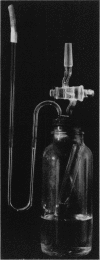Abstract
Hart, Lewis T. (Louisiana State University, Baton Rouge), A. D. Larson, and C. S. McCleskey. Denitrification by Cornyebacterium nephridii. J. Bacteriol. 89:1104–1108. 1965.—Corynebacterium nephridii was found to reduce nitrate (contrary to the original description) at a rapid rate. In the conventional 0.1% nitrate broth, neither nitrite nor nitrate was detected after 24 hr. There was no assimilation of nitrate nitrogen, and the final product of nitrate reduction was nitrous oxide. Manometric studies and growth experiments indicated that the organism is incapable of reducing nitrous oxide. C. nephridii is gram-negative, grows on bile salts (5%) agar, EMB Agar, and MacConkey Agar. It was proposed that this species be transferrrd to the genus Achromobacter and designated Achromobacter nephridii (Büsing, Döll, and Freytag) comb. nov.
Full text
PDF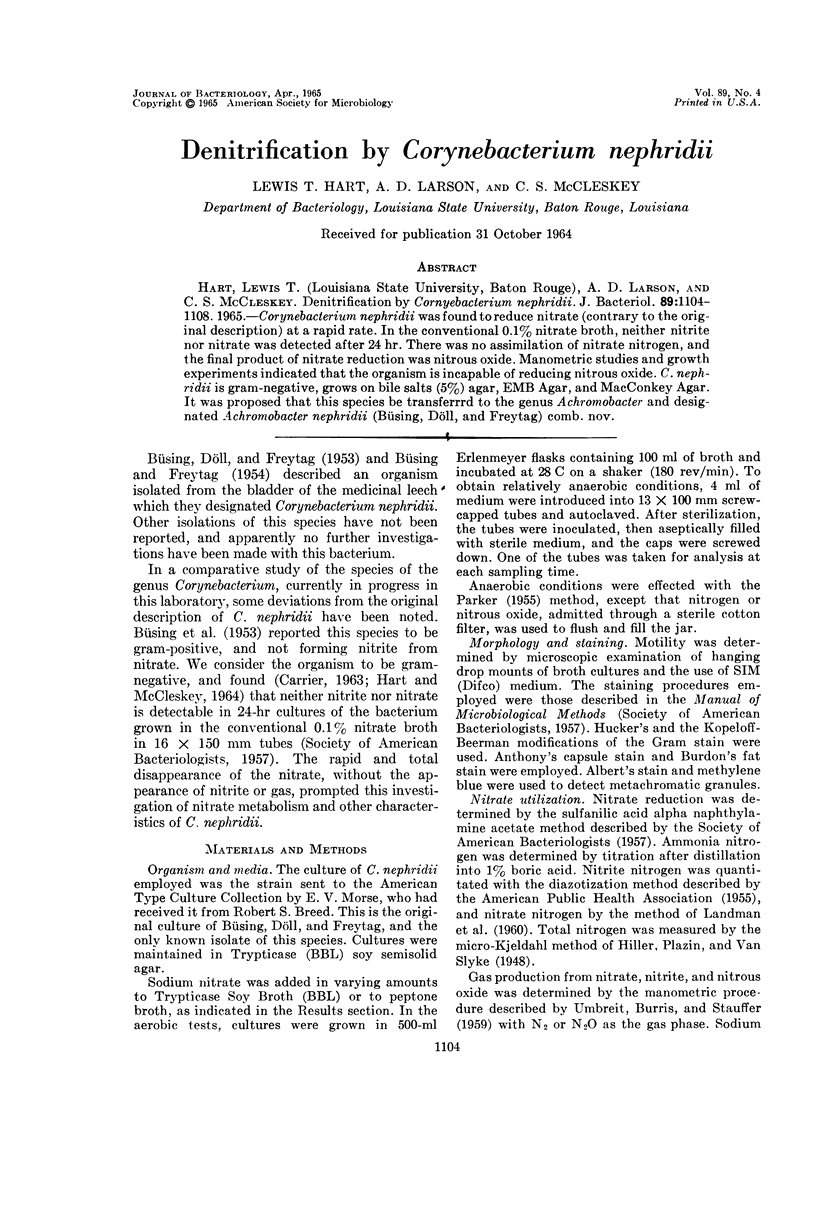
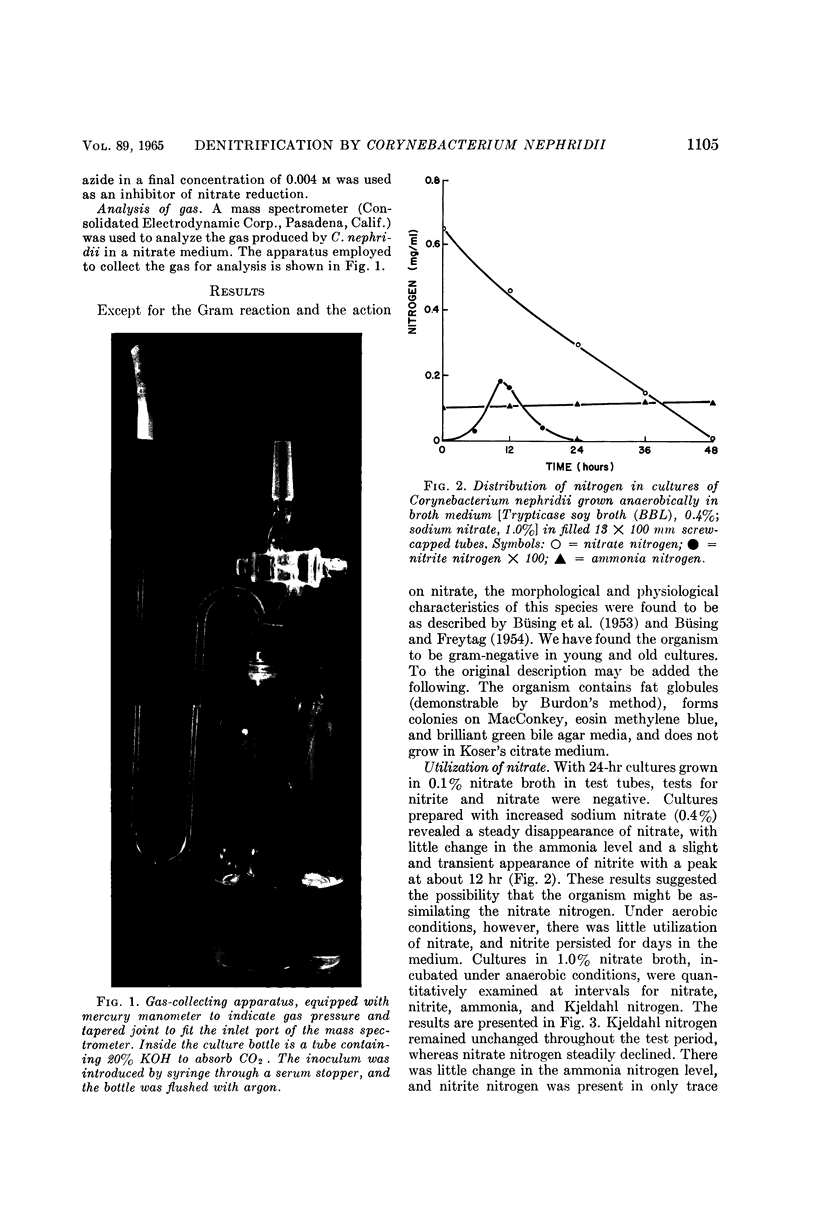
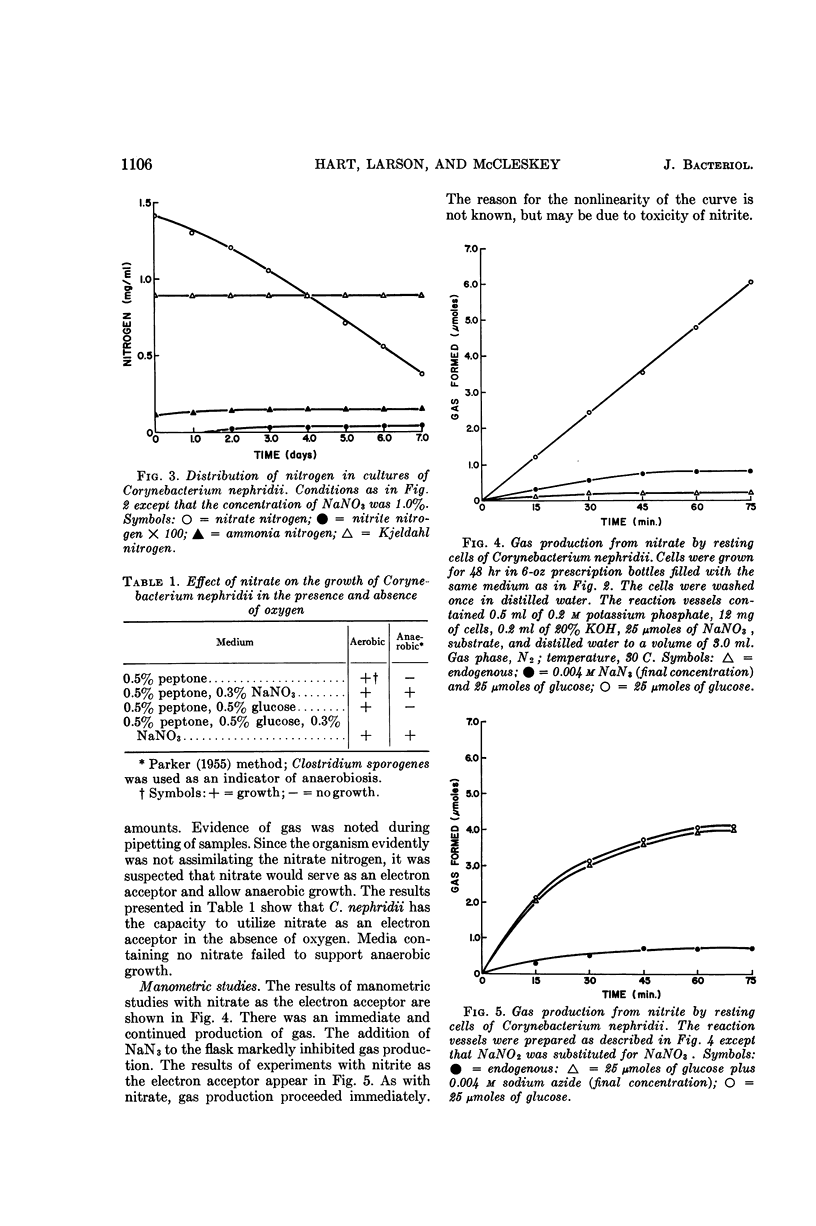
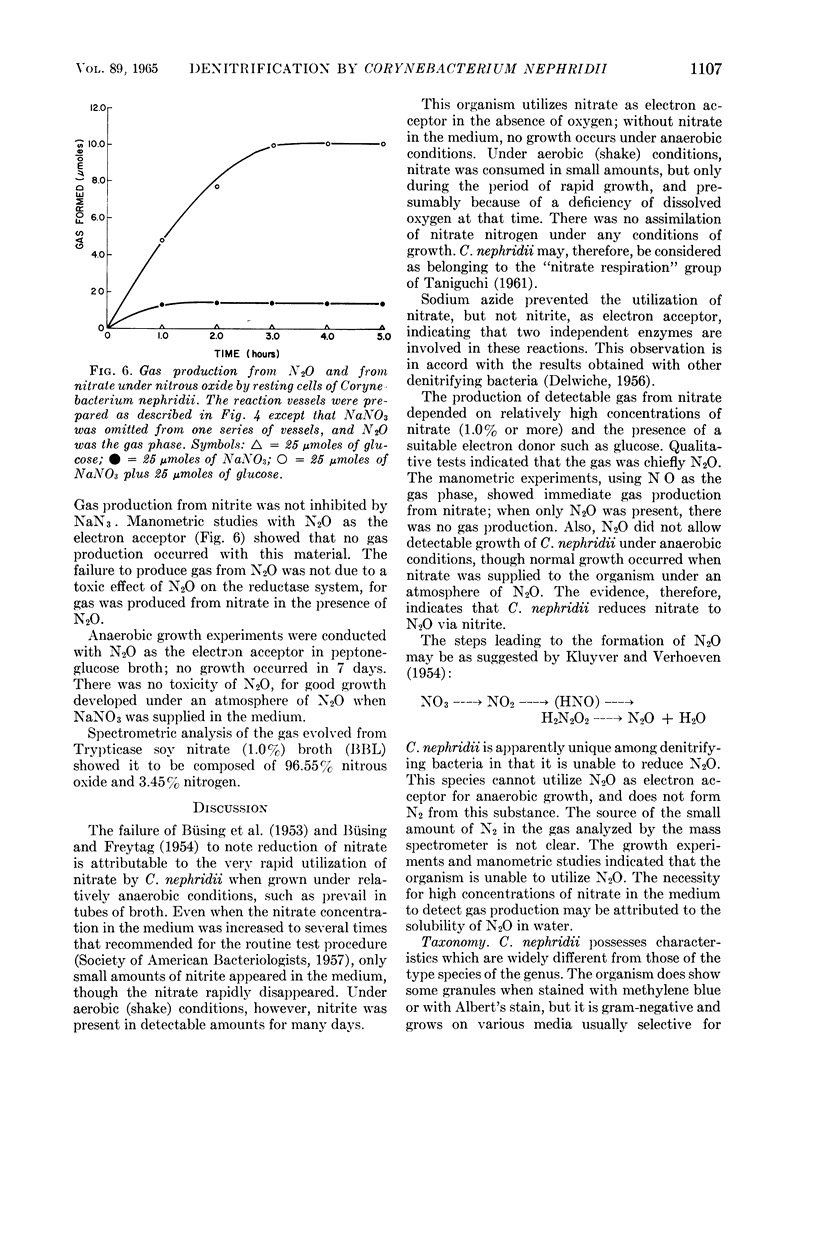
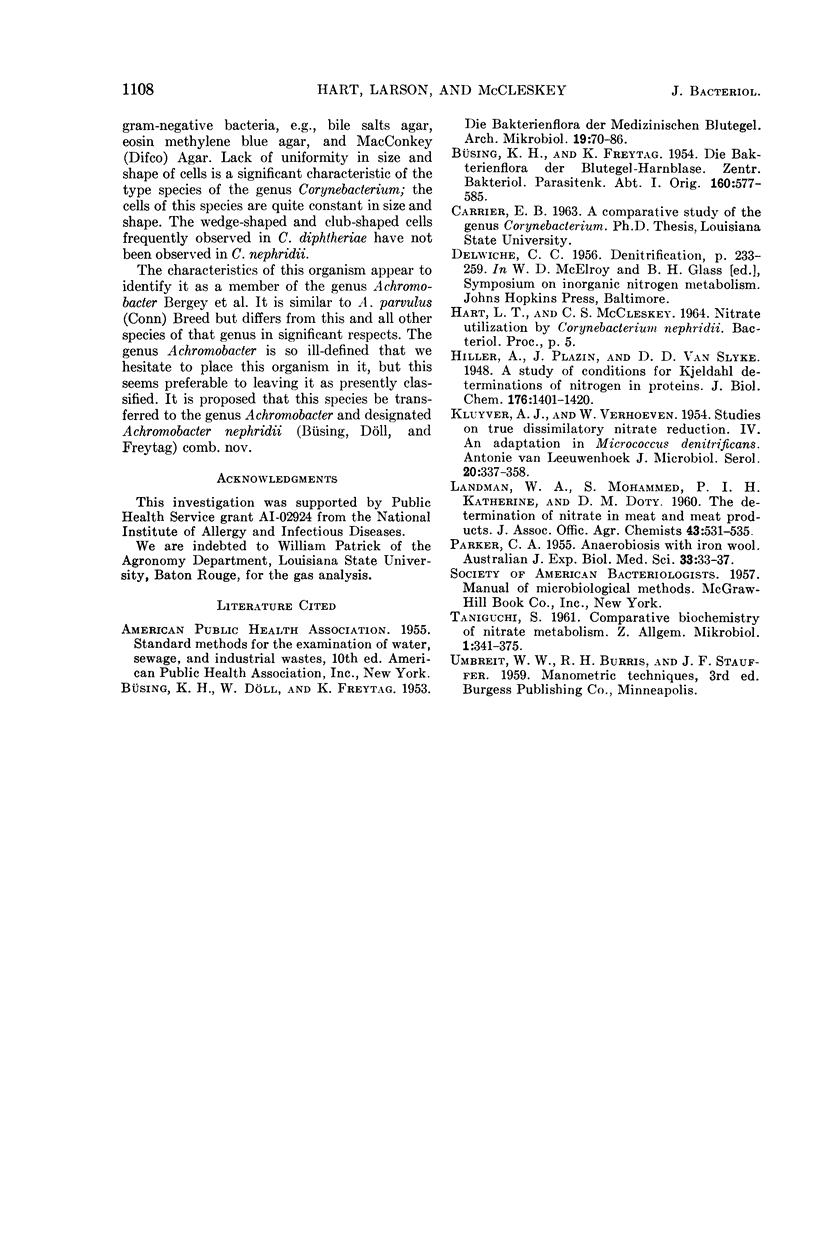
Images in this article
Selected References
These references are in PubMed. This may not be the complete list of references from this article.
- BUSING K. H., FREYTAG K. Die Bakterienflora der Blutegel-Harnblase; Mitteilung über zwei neue Corynebakterien-Spezies bei Blutegein. Zentralbl Bakteriol Orig. 1954;160(7-8):577–585. [PubMed] [Google Scholar]
- KLUYVER A. J., VERHOEVEN W. Studies on-true dissimilatory nitrate reduction. IV. On adaptation in Micrococcus denitrificans. Antonie Van Leeuwenhoek. 1954;20(4):337–358. doi: 10.1007/BF02543738. [DOI] [PubMed] [Google Scholar]
- PARKER C. A. Anaerobiosis with iron wool. Aust J Exp Biol Med Sci. 1955 Feb;33(1):33–37. doi: 10.1038/icb.1955.4. [DOI] [PubMed] [Google Scholar]



